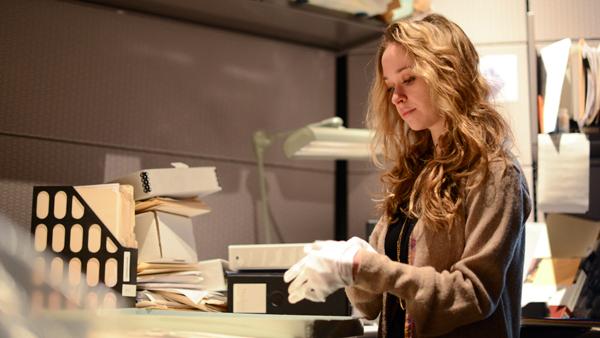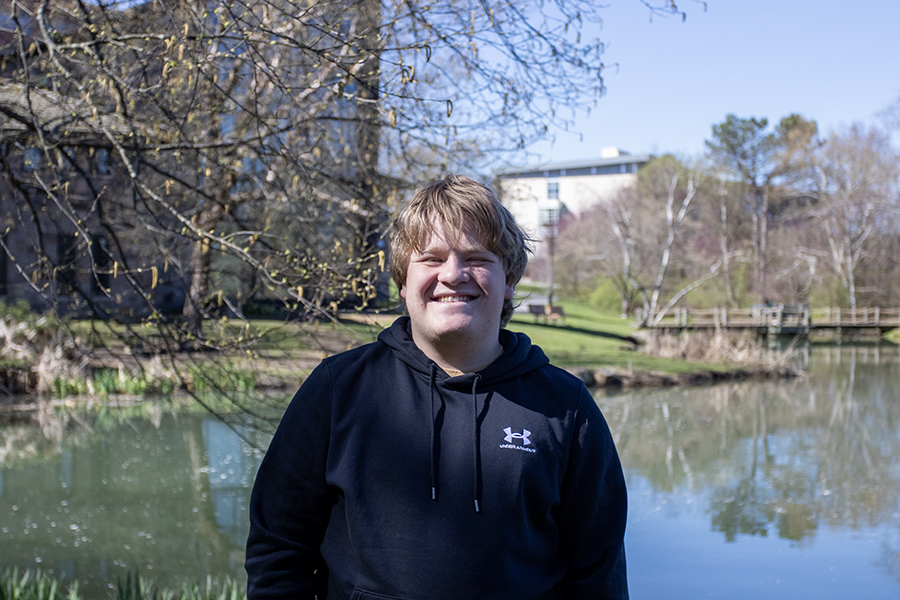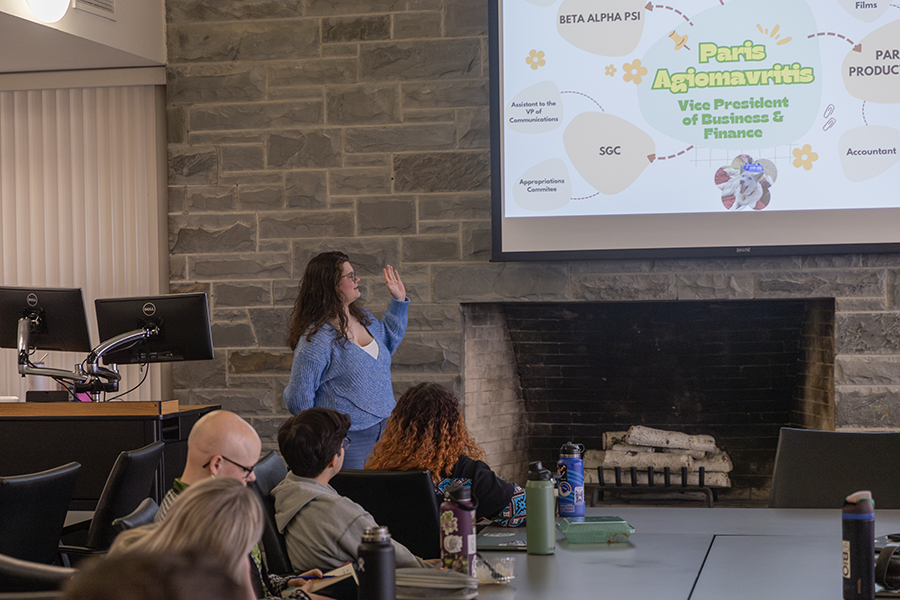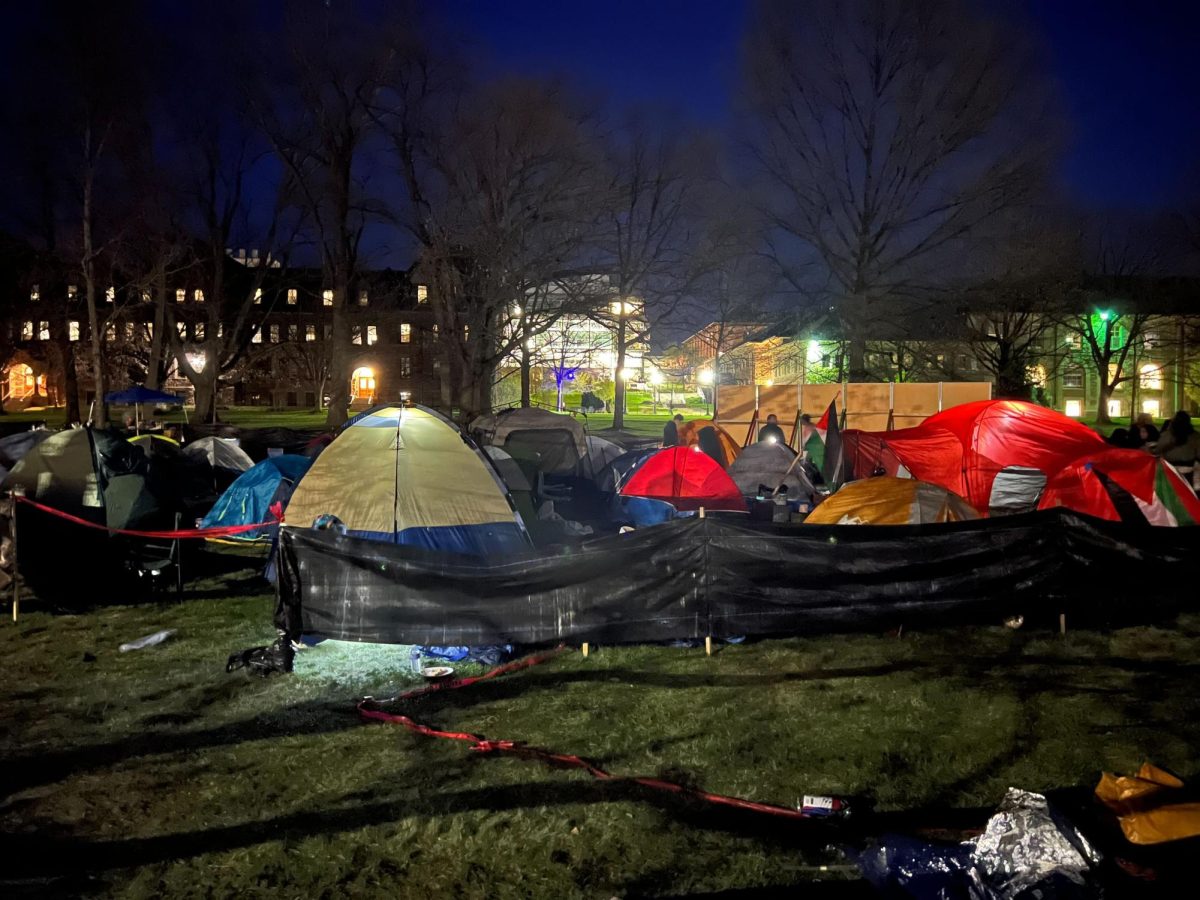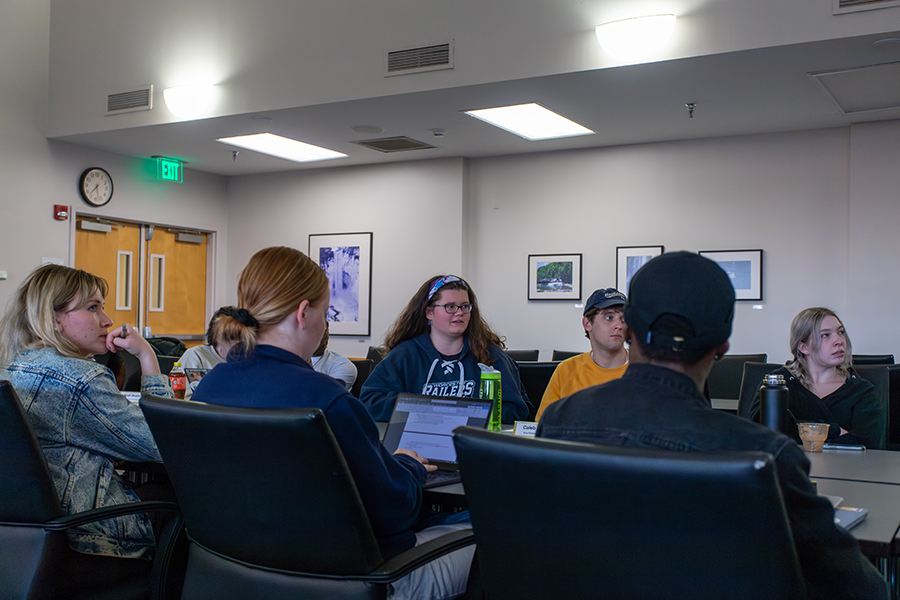Students in art history now have an opportunity to get hands-on experience in museums and learn what it takes to make it in a museum or gallery. Beginning this semester, a concentration in museum studies has been made available to art history majors.
The concentration is an 18-credit experience geared toward students who are interested in pursuing a career in a museum or gallery setting.
Gary Wells, chair of the art history department, said there have been museum and gallery-orientated courses on the books for years, and the concentration is recognizing that, together, they form a pattern. Plans for the concentration began about three years ago. Currently, two students are enrolled in the program, while several others are in the process of doing the paperwork.
Students are required to complete a three-credit internship for the concentration. This can be done at the Handwerker Gallery, a local art organization, or a museum or art gallery. They must also take an arts management class outside the art history program, such as Principles of Marketing or Proposal and Grant Writing.
Many of the lower-level classes in the program are the same as requirements for the general art history major, which makes it easy for students who are already enrolled in the art history program to concentrate in museum studies.
Upper level classes such as Exhibition, Education and Outreach, which was designed for the program, and Museum Practices and Methods differentiate the concentration from the major.
Both of the new courses that were developed for the program were taught in the spring before the program was available for enrollment. In the Exhibition, Education and Outreach class, students worked to prepare the Handwerker Gallery for the African art exhibition and went to the collector’s home to pack the objects and led tours when the exhibition opened.
Wells said the combination of experiential and theoretical learning will appeal to students.
“We’re trying to attract students to perhaps see art history primarily through the lens of a gallery and a museum, both as institutions and as a theoretical framework for the study of art history,” Wells said.
Senior Jaimie Fitzgerald, a student who plans to enroll in the program, said the real-life application is what attracted her.
“It gives students an opportunity to see what’s possible for their futures, and I think it’s just a little taste of what’s to come,” Fitzgerald said.
Museum studies classes are open to students in any major as long as they meet the prerequisites. Paul Wilson, assistant professor of art history, recommends that students take Introduction to Museology if they are interested in the program. He said the classes are often applicable to other majors, specifically history and archeology.
Next semester, a former director of the Handwerker Gallery is coming to teach Museum Practices. Program supervisors are in the process of hiring another teacher to teach some of the more hands-on classes. Other professors who are teaching museum studies classes are current art history faculty.
Wilson said he was hired to help develop the concentration. He said it gives students a hands-on experience of their career interests while they are in college.
“We wanted to give students that are interested in museums and art galleries, both as cultural institutions — they love museums — but also as potential workplaces, the opportunity to investigate those career paths as part of their undergraduate major,” Wilson said.


